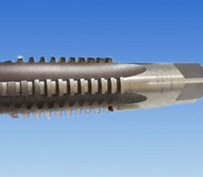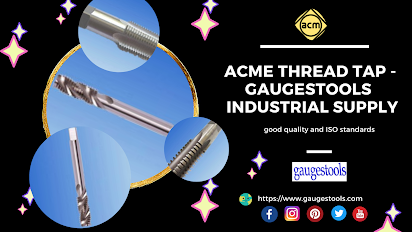Perfect Precision: Unlocking the Power of NPSM Thread Gauges
In the world of manufacturing and engineering, precision is paramount. Ensuring that components fit together perfectly and function as intended is crucial for maintaining the quality and reliability of products. One essential tool that helps achieve this precision in threaded components is the NPSM thread gauge. In this blog post, we will explore what NPSM thread gauges are, their significance in various industries, and how to select and use them correctly.
What Are NPSM Thread Gauges?
NPSM stands for National Pipe Straight Mechanical, a standard thread type used primarily in mechanical applications where a straight thread is needed rather than a tapered one. Unlike NPT (National Pipe Taper), which has a conical thread profile designed to form a seal through metal-to-metal contact, NPSM threads are straight (parallel) and are typically used where a mechanical fit is necessary, not a pressure-tight seal.
NPSM thread gauges are precision tools used to inspect the threads of NPSM threaded parts. These gauges ensure that the threads conform to the required specifications, ensuring proper fit and function in mechanical assemblies. There are two main types of NPSM thread gauges:
-
Go and No-Go Gauges: These gauges check whether a thread meets the upper and lower size limits. The "Go" gauge should fit smoothly into the part's internal or external thread, while the "No-Go" gauge should not fit if the thread is within specification.
-
Ring and Plug Gauges: These are used to check the external (male) and internal (female) threads, respectively. Ring gauges are used for inspecting external threads, while plug gauges are for internal threads.
Why are NPSM Thread Gauges Important?
Ensuring the accuracy of threads is crucial in various industries, including plumbing, automotive, aerospace, and manufacturing. NPSM thread gauges play a vital role in quality control and inspection processes, helping to maintain consistent thread dimensions and prevent costly errors during assembly. By using NPSM thread gauges, manufacturers can guarantee that their products meet industry standards and specifications, leading to improved performance and reliability.
The Importance of NPSM Thread Gauges in Various Industries
Find high-quality NPSM thread gauges products at Gaugestools. Expert thread gage manufacturers providing accurate measurements for your industrial needs. NPSM thread gauges play a crucial role in various industries, particularly in manufacturing and mechanical engineering. Here's why they are important:
-
Ensuring Fit and Compatibility: NPSM thread gauges are used to verify that threads are within the acceptable tolerance range, ensuring that components can be assembled correctly. This is crucial in industries like automotive, aerospace, and industrial machinery, where precise thread fittings are necessary for the assembly of parts.
-
Maintaining Quality Control: Thread gauges are integral to the quality control process. They help manufacturers maintain consistent product quality by ensuring that threads are cut correctly and adhere to the required standards. This minimizes the risk of defective parts, reducing waste and rework.
-
Safety and Reliability: In many industries, such as aerospace and automotive, the reliability of threaded connections is critical for safety. Faulty threads can lead to component failure, which could have catastrophic consequences. Using NPSM thread gauges to verify thread integrity helps prevent such issues, ensuring the safety and reliability of the final product.
-
Compliance with Standards: Many industries are governed by strict standards and regulations that require components to meet specific thread specifications. NPSM thread gauges are essential tools for ensuring compliance with these standards, whether they are set by national or international bodies.
How to Choose the Right NPSM Thread Gauge
Selecting the right NPSM thread gauge for your application involves considering several factors:
-
Understanding the Application Requirements: The first step is to understand the requirements of your specific application. This includes knowing the size and type of thread (internal or external) you need to measure, the tolerance level required, and whether the gauge will be used for production or inspection purposes.
-
Choosing the Right Material: Thread gauges are typically made from high-quality tool steel or carbide. Tool steel is durable and cost-effective, making it suitable for general-purpose use. Carbide gauges, on the other hand, offer greater wear resistance and are ideal for high-volume production environments where the gauge will be used frequently.
-
Gauge Type: Decide whether you need a Go/No-Go gauge or a ring/plug gauge. Go/No-Go gauges are ideal for quick pass/fail inspection, while ring/plug gauges provide a more detailed analysis of the thread's quality and conformity.
-
Gauge Accuracy: Ensure the gauge you choose has the accuracy required for your application. This is typically specified by the manufacturer and can vary depending on the intended use of the gauge.
-
Compliance with Standards: Make sure the NPSM thread gauge you select complies with the relevant standards, such as ANSI/ASME B1.20.1, which governs pipe threads in the United States.
-
Quality of Manufacture: Choose a gauge from a reputable manufacturer known for producing high-quality precision tools. The accuracy and durability of the gauge are directly related to the quality of its manufacture.
How to Use NPSM Thread Gauges Correctly
Using NPSM thread gauges correctly is essential to obtain accurate measurements and maintain the quality of threaded components. Here are some tips on how to use them effectively:
-
Inspect the Gauge: Before use, always inspect the gauge for any signs of wear or damage. Even minor imperfections can affect the accuracy of the measurement.
-
Clean the Threads and Gauge: Ensure that both the threads being inspected and the gauge itself are clean and free of debris. Dirt or contamination can lead to inaccurate readings.
-
Apply the Gauge Gently: When using Go/No-Go gauges, apply the "Go" gauge gently to the thread. It should go smoothly without excessive force. If it doesn't, the thread may be undersized or damaged. Similarly, the "No-Go" gauge should not fit; if it does, the thread is oversize or incorrectly machined.
-
Proper Handling and Storage: Handle thread gauges with care to prevent damage. When not in use, store them in a protective case or holder to prevent exposure to dust, dirt, or other contaminants that could affect their accuracy.
-
Regular Calibration: Regularly calibrate your thread gauges to ensure they maintain their accuracy over time. Calibration should be performed according to the manufacturer's recommendations or industry standards.
-
Training and Safety: Ensure that personnel using the thread gauges are properly trained in their use and handling. This reduces the risk of damage to the gauges and ensures accurate and consistent measurements.
Common Challenges and Solutions
While NPSM thread gauges are indispensable tools, there are some common challenges associated with their use:
-
Wear and Tear: Frequent use of thread gauges can lead to wear, affecting their accuracy. Regular inspection and calibration can mitigate this issue.
-
Environmental Factors: Dust, dirt, and temperature variations can affect the gauge's accuracy. Proper storage and handling practices can help prevent environmental damage.
-
Incorrect Usage: Improper use of thread gauges, such as applying excessive force or using the wrong gauge type, can lead to inaccurate measurements. Proper training and adherence to best practices can prevent such issues.
-
Gauge Compatibility: Using a thread gauge that does not conform to the specific thread standard or size can lead to incorrect measurements. Always verify the gauge's specifications before use to ensure compatibility with the threads being inspected.
Conclusion
NPSM thread gauges are critical tools in various industries where precision and quality control are paramount. Understanding their types, uses, and best practices for selection and application is essential for maintaining the integrity of threaded components and assemblies. By choosing the right gauge, using it correctly, and adhering to regular maintenance practices, manufacturers can ensure their products meet the highest standards of quality and safety. Contact Gaugestools for precision thread gages manufactured by experts in the industry. Reach out today!





Comments
Post a Comment